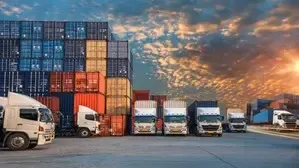Transforming Gender Diversity in a $380 Billion Logistics Industry: DPIIT

Synopsis
Key Takeaways
- Policy recommendations for enhancing gender diversity.
- Collaboration with GIZ under the Indo-German project.
- Current challenges to women's participation analyzed.
- Importance of education in changing perceptions.
- Three-tiered strategy for comprehensive change.
New Delhi, March 8 (NationPress) A recent report from the Department for Promotion of Industry and Internal Trade (DPIIT) highlighted essential policy recommendations to boost gender diversity within the rapidly evolving logistics sector, projected to reach $380 billion by 2025.
Amardeep Singh Bhatia, Secretary of DPIIT, unveiled the report titled "Enabling Women's Participation in India's Logistics Sector," which was developed in partnership with the Deutsche Gesellschaft für Internationale Zusammenarbeit (GIZ) GmbH as part of the Indo-German Development Cooperation initiative, known as the Climate Friendly Green Freight Transport in India (Green Freight Project).
The report provided critical insights and strategies aimed at increasing the involvement of women in India’s logistics sector.
It evaluated the current landscape of women's participation, examined significant obstacles to their inclusion, and proposed policy measures to enhance gender diversity.
Bhatia underscored the relevance of this report in relation to the National Logistics Policy (NLP) and the government's vision for women-led progress.
"As we advance towards Viksit Bharat, guided by Prime Minister Narendra Modi, the key driver of our nation's progress will be women-led development. Facilitating women's engagement in high-growth sectors like logistics is not merely an issue of fairness but an economic imperative," he asserted.
He also emphasized the crucial impact of education in changing perceptions and empowering women.
"The potential of women is on par with that of men; what is necessary is a transformation in mindset. Women may have distinct needs, which the workplace environment and ecosystem must accommodate," he remarked.
The report identified both supply-side challenges, including gender gaps in education and skill development, and demand-side barriers such as workplace culture and infrastructural shortcomings.
It proposed a three-tiered strategy comprising interventions at the ecosystem, industry, and firm levels to establish a thorough framework for change.









